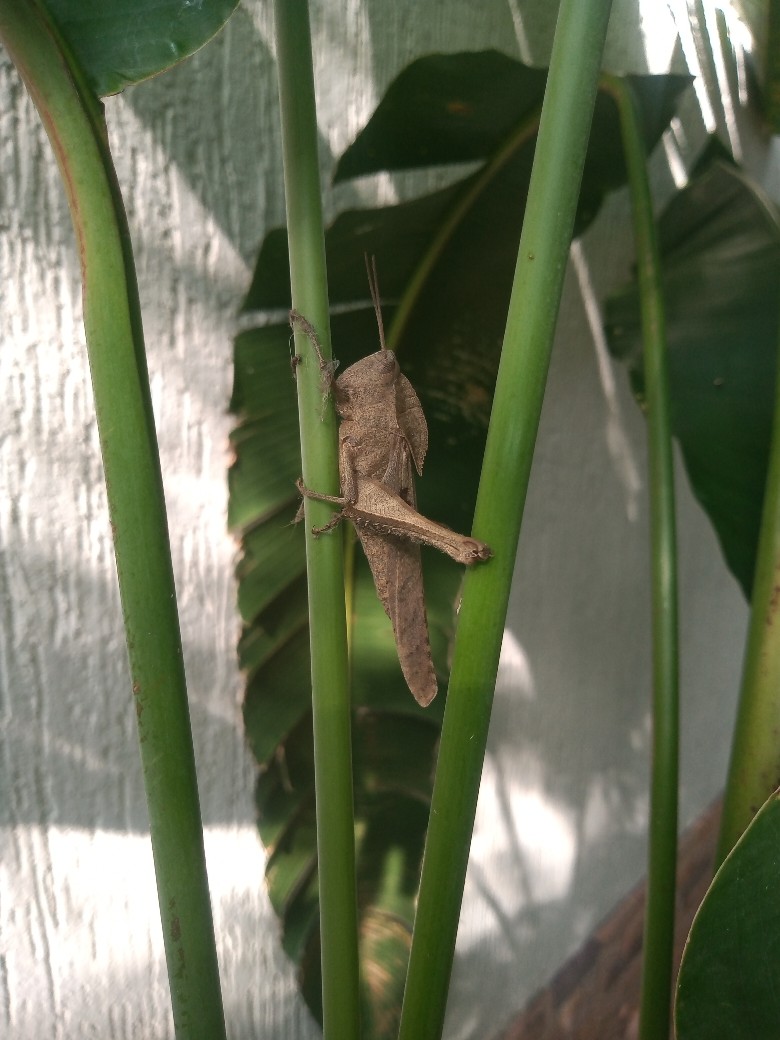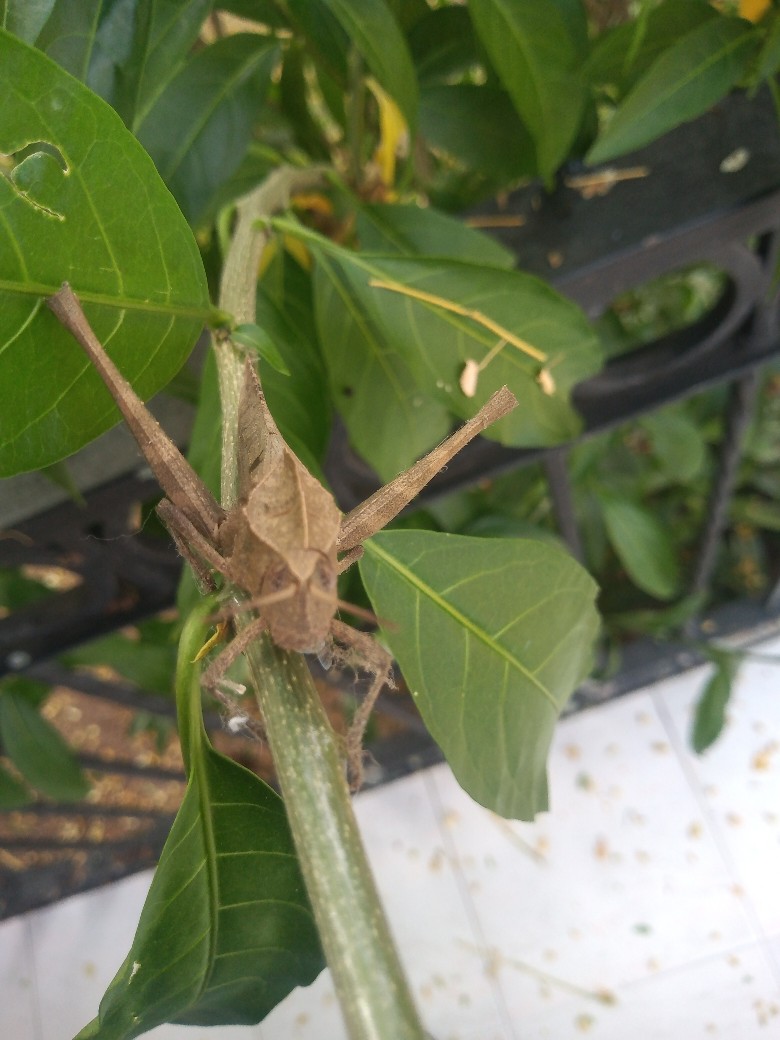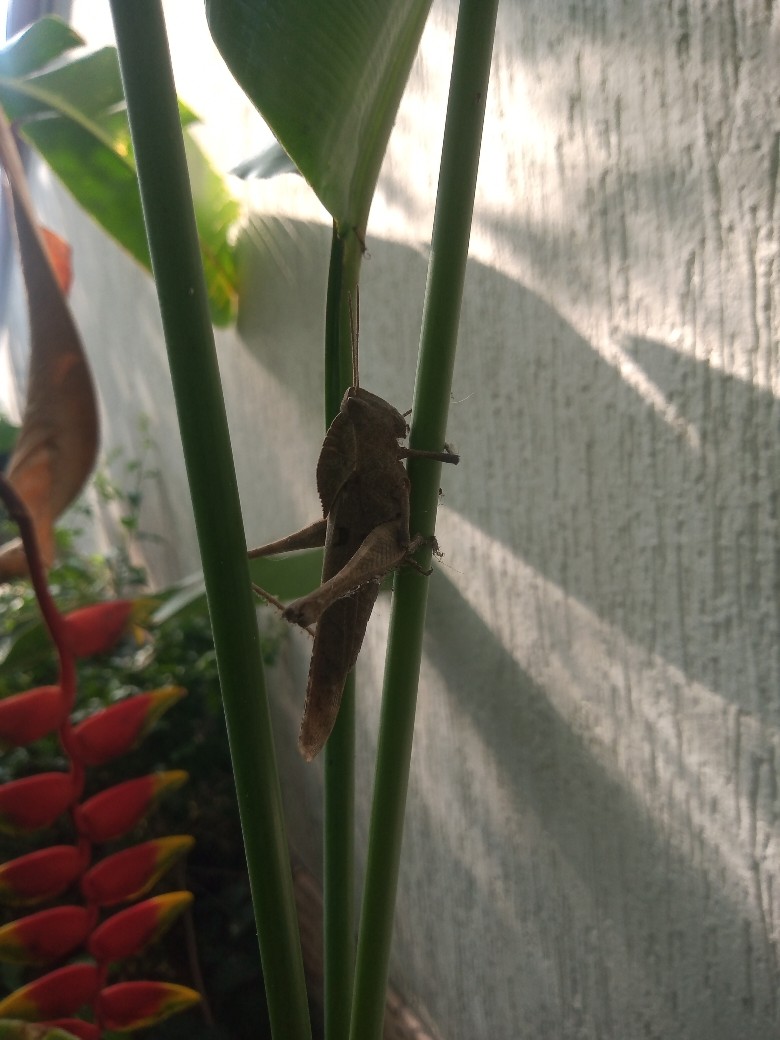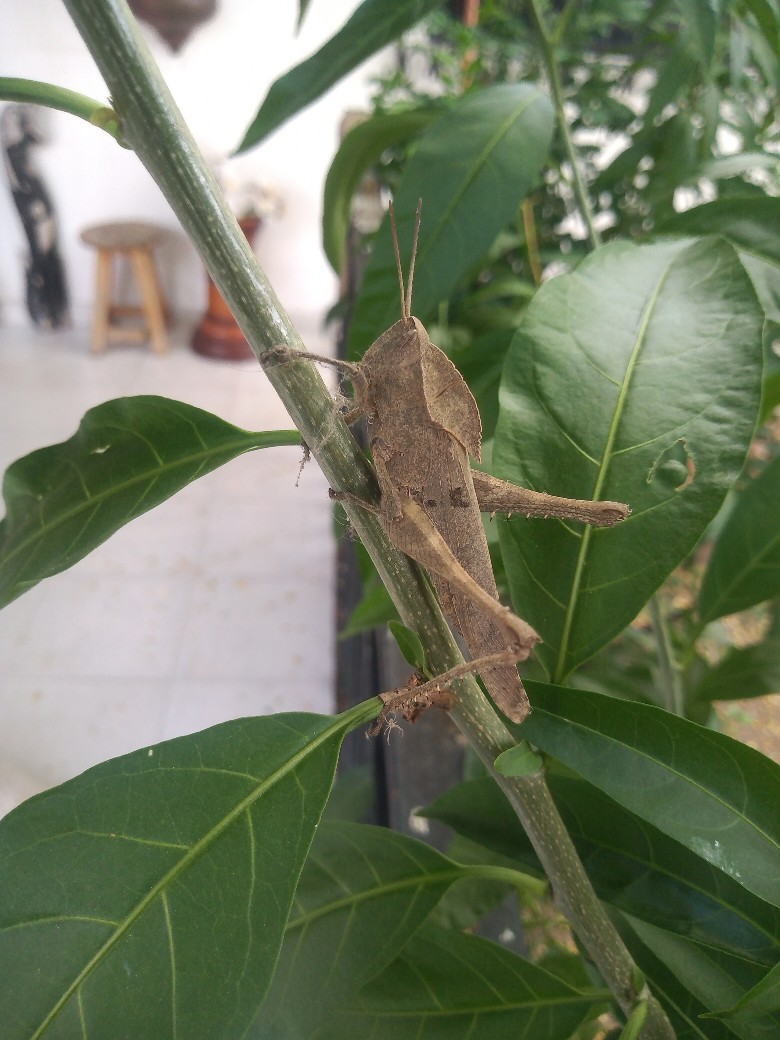[ENG-ESP] Cute brown grasshopper acrididae in my garage / Simpático saltamontes pardo acrididae en mi garaje

Greetings friends of #amazingnature I want to share with all of you these beautiful images of a grasshopper that I managed to find trapped in some thread nets that were in the garage of my house, I approached little by little and without hesitation I took him with my hands to help him, then I took him to the garden to relocate him and give him well-being.
This is a brown grasshopper belonging to the acrididae species. These grasshoppers belong to the herbivorous group of animals, so they feed on grasses, but they can also feed on plants and some fruits. Their main food is plants. They can eat spinach, grated carrots, chard and others.
As for their size, they can grow up to 5 cm in length, the largest species can reach up to 12 cm. Females are usually larger than males. The color mostly ranges from brown to green, they can also have yellow or red markings.
Saludos amigos de #amazingnature quiero compartir con todos ustedes estas hermosas imágenes de un saltamontes que logré encontrar atrapado en unas redes de hilo que estaban en la cochera de mi casa, me acerqué poco a poco y sin dudarlo lo tomé con mis manos para ayudarlo, luego lo llevé al jardín para reubicarlo y darle bienestar.
Se trata de un saltamontes marrón perteneciente a la especie acrididae. Estos saltamontes pertenecen al grupo de animales herbívoros, por lo que se alimentan de hierbas, pero también pueden alimentarse de plantas y algunos frutos. Su principal alimento son las plantas. Pueden comer espinacas, zanahorias ralladas, acelgas y otras.
En cuanto a su tamaño, pueden crecer hasta 5 cm de longitud, las especies más grandes pueden alcanzar hasta 12 cm. Las hembras suelen ser más grandes que los machos. El color en su mayoría va del marrón al verde, también pueden tener marcas amarillas o rojas.





How can we identify the sex of this type of grasshopper?
In the case of males, they have a single plate at the bottom of the abdomen.
For females. They have two pairs of valves (in the shape of a triangle) on the abdomen that they use to dig in the sand when they go to lay eggs.
Grasshoppers belong to the oldest living group of herbivorous chewing insects, which have existed since the early Triassic, about 250 million years ago. They are characterized by large hops and long-distance travel.
It is currently estimated that there are about 11,000 species of grasshoppers worldwide. They are distinguished according to their family or species of grasshopper:
Family Acrididae
Family Eumastacidae
Family Tetrigidae
Family Tridactylidae
The life span for these grasshoppers is approximately one year, although the actual rate is three months, due to the predators that stalk them. In their growth period there are three stages: egg, nymph and adults. It is important to know that grasshoppers only survive the cold in the egg stage, since adults do not survive the cold.
¿Cómo podemos identificar el sexo de este tipo de saltamontes?
En el caso de los machos, tienen una única placa en la parte inferior del abdomen.
En el caso de las hembras. Tienen dos pares de válvulas (en forma de triángulo) en el abdomen que utilizan para excavar en la arena cuando van a poner huevos.
Los saltamontes pertenecen al grupo más antiguo de insectos herbívoros masticadores, que existen desde principios del Triásico, hace unos 250 millones de años. Se caracterizan por dar grandes saltos y desplazamientos de larga distancia.
Actualmente se calcula que hay unas 11.000 especies de saltamontes en todo el mundo. Se distinguen según su familia o especie de saltamontes:
Familia Acrididae
Familia Eumastacidae
Familia Tetrigidae
Familia Tridactylidae
La duración de la vida de estos saltamontes es de aproximadamente un año, aunque la tasa real es de tres meses, debido a los depredadores que los acechan. En su periodo de crecimiento hay tres etapas: huevo, ninfa y adultos. Es importante saber que los saltamontes sólo sobreviven al frío en la fase de huevo, ya que los adultos no sobreviven al frío.
Part of the information was read in:
.jpg)
🙏Gracias por tu visita/ Thank you for your visit!👍
Fotos tomadas desde mi celular Motorola E6 plus
Banners realizado en Canva.
Photos taken from my Motorola E6 plus cell phone.
Banners and dividers made in Canva.
.gif)
We appreciate your work and your post has been manually curated by zoology team (oscurity,nelinoeva) on behalf of Amazing Nature Community. Keep up the good work!
hello in your next post put the source from where you get the scientific information please! apart is a great post!
Thank you, the scientific information can be viewed here: https://animapedia.org/animales-terrestres/saltamontes/
I like to read the behavior of nature and its environment. It is fantastic friends. Greetings.
very informative
We appreciate your work and your post was manually curated by @none! from the DNA team!
Reach us on Discord to learn more about the project!
Thank you, I'm glad you liked it, it motivates me to keep improving every day.
Gracias por su apreciación, me motivan a seguir haciendo contenido. Mil gracias.